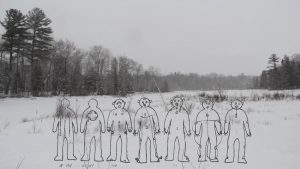I went to Elizabeth Dee gallery to see “With the Eyes of others: Hungarian Artists of the Sixties and Seventies”. The exhibition presented “more than one hundred works by thirty artists active in the Hungarian Neo-avant-garde in the latter half of the 20th century. The exhibition was about introduction to the period, capturing the particular mood and texture of the non official art scene which was very interesting. Actually, it was little difficult to understand the meaning of Hungarian Neo-avant-garde just looking at the exhibiton because I am not familiar with Neo-avant-garde. However, it was interesting that there were photography of thirty artists active in the Hungarian Neo-avant-garde doing their works or taking photo with their works. Also, there were photos of different facial expression which was very interesting. I forgot the name of the photo but there was a photo of a woman holding a frame and making different facial expression was my best work. Through her different facial expression, I found that people has not only different facial expression but also different taste in art. Also, there were lots of paintings at the exhibiton. The paintings were very colorful and beautiful. Even though the painting were colored only with colorful color and couldn’t find any meaning but it felt very relief justing looking at the paintings.
From this exhibition, I learned that people has different taste in art. Some people like this kind of exhibiton and some poeple doesn’t like this kind of exhibiton because it is hard to find the meaning of photography and paintings. However, some arts seems nothing there is meaning. I realized that the each painting has meaning after I read the explaination. Even though it looks nothing there is hidden meaning.
